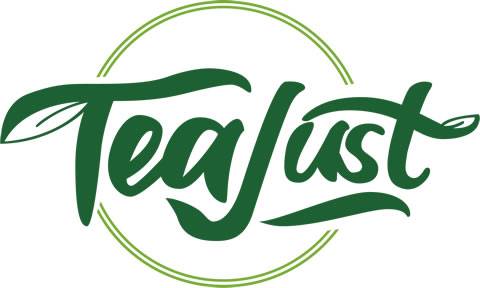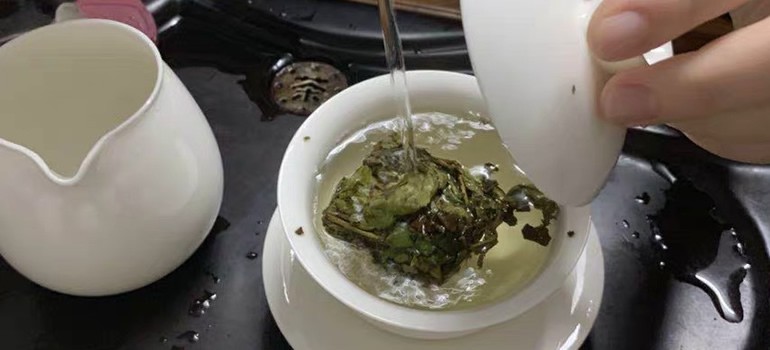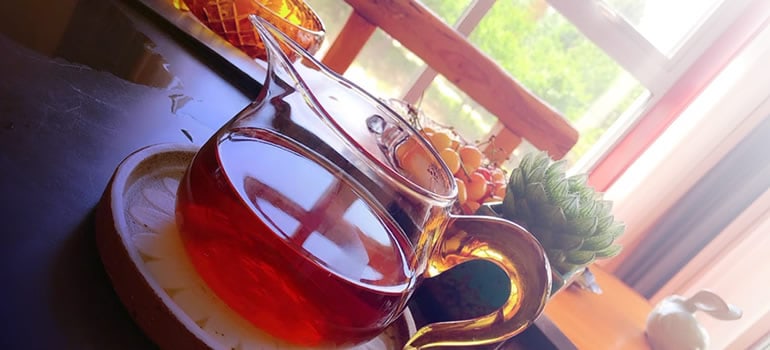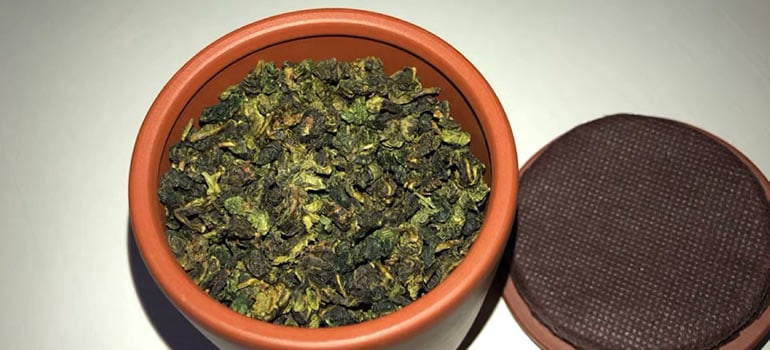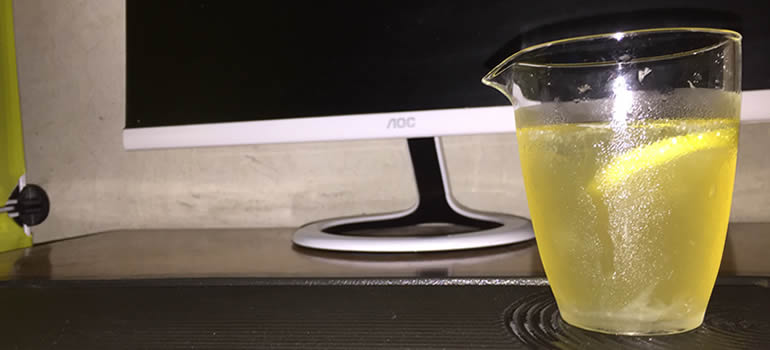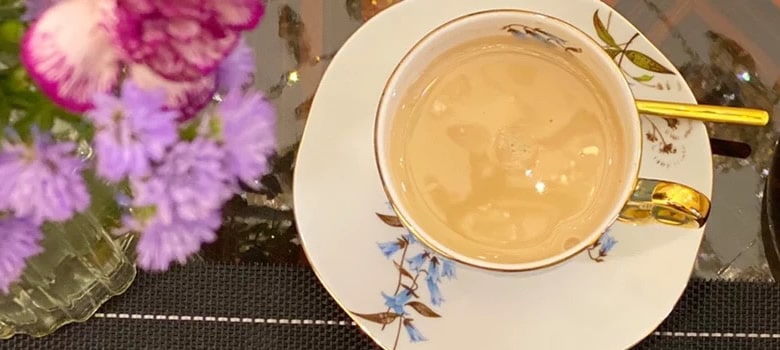
I know that tea purists will cringe at the mere thought of making tea without a teapot—especially given some of the suggested methods below.
But sometimes people have to make do with what they have at their disposal.
We all are from the same team—team tea—and we need our fix, but what happens if we have no access to a quality teapot or any teapot for that matter?
Luckily there are a few things that we can do to still enjoy our favorite cuppa.
The 7 Best Ways to Make Tea Without a Teapot
When preparing tea, there are a few basic steps that we need to follow every single time:
- A suitable amount of water should be brought to the desired temperatures;
- The tea leaves or tea bag should be brought into contact with the hot water for a specified amount of time; and
- After the desired steeping time has passed, the tea should be removed to avoid over-steeping it.
So, where exactly does the teapot come into play?
Well, the sole purpose of a teapot is to facilitate the steeping process. In other words, it is not used for boiling water or doing anything else besides steeping and holding the tea.
What that means for us is that we simply need to find different, alternative ways to steep tea. The good news is that there are indeed many different ways to do that.
This is why, naturally, I will start with the most straightforward way we can go about this.
However, it is worth mentioning that all things being equal, using a teapot remains the best way to make tea.
With a Regular Teacup
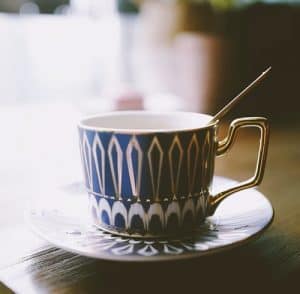
Although tradition requires a teapot to be used, we can always just steep our tea directly in our teacup. Other containers that have been designed to hold liquids can also be used like travel mugs and tumblers, jars, measuring cups, pitchers, and so much more.
Of course, if you will be drinking afternoon tea at a place where etiquette is essential, then this is definitely something we do not do.
- Start by bringing the necessary amounts of water to a slight boil (or the required temperatures);
- If you are using a teabag, place it in your teacup and pour the hot water over it;
- Cover the cup with a saucer or plate and let the tea steep.
- When the tea has reached a level of strength suitable to your liking, remove the plate and take out the teabag. And enjoy your tea.
But what happens if you are using—as you should— loose leaf tea. Well, things can get a little trickier because you will need a few accessories.
If you are using loose leaf tea, you will have to use a tea infuser. That way, you will allow the tea to steep properly and infuse the water, but at the same time, you will keep it from spreading everywhere.
If you don’t have a tea infuser, then you can use one cup to steep your tea in and then pour it over using a strainer in a different cup. This is definitely not a very good or traditional way to do that, as it is messy, and there is a high risk of splashes and spills. Your tea may go cold a little quicker, too.
The material your teacup (mug or tumbler) is made out of is important to keep in mind. Not all cups and mugs are going to be suitable for tea making. Some cups may even break under the high heat from the water, while others may react with the tea and alter its flavor and aroma qualities.
The best non-reactive and inert materials are glass and stainless steel. They are food grade and will not leach harmful chemicals or toxins into your tea. Both of these materials are usually non-porous and will not retain smells and flavors.
Other materials like aluminum, copper, and plastic, however, can alter the taste of your tea and leach off toxic chemicals, metals, and more.
With a Turkish Coffee Pot
Turkish coffee pot, which is also known as ibrik or cezve, can be used for making tea. Although the Turkish coffee pot is used for the preparation of Turkish coffee, it can also be used for tea—and this is something that I, too, have been doing from time to time.
Turkish coffee pots come in varying sizes, but, generally speaking, they are relatively small, so you can make one to two cups of tea. They are very versatile and easy to use, there is very low to no risk of splashes or spills—something that I especially like about these pots.
- Pour the needed amount of water in the Turkish coffee pot;
- Place it on the stove and let it get to boiling temperatures (or slightly below the point of boiling depending on what kind of tea you are preparing);
- Once the water has reached the required temperatures take it off the stove;
- If you are using loose leaf tea, add it directly to the water in the Turkish coffee pot and cover it with a lid or a plate. Use a strainer when pouring the tea to catch the tea leaves;
- If you are using a teabag you can either put it in the Turkish coffee pot or in your teacup and pour the hot water in the cup; and
- Let the tea steep and drink it as usual.
This method is super easy and does not involve any complicated appliances or techniques. However, you will need a source of heat like a stovetop or a hot plate and something to cover the pot while the tea steeps.
Turkish teapots are usually made from stainless steel, but some can be made from copper as well, which could potentially alter the taste of your tea.
For general use, choose stainless steel or cast iron Turkish coffee pots. Stainless steel and cast iron are safe materials that will not alter the taste of your tea.
With a Coffee Pot (And a Coffee Maker)
Coffee pots are not the same as teapots.
However, they can still make do for an excellent teapot substitute. Coffee pots are usually made from glass that is capable of withstanding high temperatures pretty well, so you will not have to worry about the glass breaking.
- Bring the needed amount of water to a boil;
- Place your tea in the coffee pot and pour the hot water in it;
- Close the lid or cover the coffee pot with a plate if it does not have a lid;
- Leave the tea to steep for as long as necessary depending on your taste preferences; and
- When ready, pour the tea in your teacup and drink as usual.
With that being said, you can couple the coffee pot with the coffee maker. Place your tea in the coffee pot and use the coffee maker to heat up the water. Keep in mind, however, that coffee makers usually do not bring the water to boiling temperatures.
The reason for this is because coffee is not brewed at boiling temperatures, so the water will very rarely go over 200°F (93.3°C). This detail is important as some teas require lower steeping temperatures while others higher.
Coffee pots are very convenient and easy to use. There are very low chances of spills, dripping, or splashes as they have been designed for storing and pouring liquids in the first place.
Coffee pots usually have wide mouth openings, which will allow you to easily clean and wash them after each use.
If you are using loose leaf tea, you will need to use a tea infuser or a strainer to catch all the tea leaves.
Generally speaking, design-wise, coffee pots have their spouts at the very top of their bodies. This can pose some problems as sometimes tea leaves tend to float at the top too. With a coffee pot, you will always need to use some sort of a strainer to catch the tea leaves (if you are using loose leaf tea that is).
The only downside to this method is that coffee pots, generally speaking, will have a lingering coffee smell to them that they can impart on your tea. Especially plastic coffee pots—which should actually be avoided. Plastic is a porous material, and it tends to absorb flavors and smells from whatever has been stored in it, not to mention it can also leach off toxic chemicals into your tea (and coffee).
Mixing tea and coffee is one thing, but preparing plain tea that has coffee tinges is definitely not going to be the best tea experience you have ever had.
With Different Pots and Pans
Another way you can make tea without a teapot is to use different cookware that is suitable for holding liquids. Any pot or pan that you have in your home will do. And there are a number of different products that we can choose from like:
- Sauteuse pans (frying pan);
- Saute pan;
- Saucepan;
- Saucepot;
- Stockpot;
- Wok;
- Paella pan;
- Cake pan, and more.
Deeper and smaller pans and pots that also can be covered with a lid or a plate is the best choice here. These are not really designed for that purpose but can do the job if you are in a pinch.
Be careful if you will be using your cookware (and bakeware) for steeping tea, as this can lead to splashes and dripping and can be one relatively messy venture.
If you are using pots and pans that are too big, the water may cool down too fast. The material of your cookware may affect the taste and flavor qualities of your tea too. Cast iron and stainless steel are the best materials in that case. Avoid using copper cookware as it can react with your tea.
With a Traditional Turkish Kettle (Or a Double Boiler)
I consider preparing tea using a traditional Turkish kettle something a little more advanced but nonetheless something that any tea enthusiast will love.
We all know how concentrated, and strong Turkish coffee can be. So it does not come as a surprise that their tea is also prepared around the same concept.
For an excellent way to prepare Turkish tea to check out this video below:
With a French Press
Although french presses are used for brewing coffee, they can also be used for steeping tea.
A French press is like a teapot but with a built-in strainer. The plunger can be used not just to separate the tea from the tea leaves but also to squeeze them and have the tea leaves release more of their aroma and complex flavor.
Even better. A french press is a very neat and clean way to make tea. There is a very low chance of dripping, splashes, and spills.
- Bring water to a boil (or the required temperature for your particular type of tea);
- Add the tea leaves to the bottom of the french press;
- Pour the hot water in and let your tea steep;
- Cover the french press with the lid;
- You can press the tea leaves a few times while they steep or press them just one time when the steeping process has finished.
- Pour your tea in suitable teacups and enjoy it.
As with any product that may have previously been used for coffee, it needs to be thoroughly cleaned and washed. Especially with plastic french presses, where there can be a powerful lingering coffee aroma and flavor that may ruin the taste and smell qualities of your tea.
The coffee residue is very hard to remove from the walls and the plunger of the french press, and there is a high chance of cross-contamination.
When using a french press to steep tea, make sure you prepare an amount of tea that you can consume right away. Otherwise, you will end up with a very bitter tasting tea. The reason for that is that the tea leaves will remain at the bottom of the french press in constant contact with the water. If you leave your tea inside, it will over-steep and get bitter.
It is recommended to use stainless steel or glass french presses.
With a Kettle
What would our lives be if we didn’t have kettles?
Electric kettles, on the other hand, make things so easy. They have their place even in cooking thanks to their ability to bring water to a boil in a few minutes.
An electric kettle is also fairly autonomous. As soon as the water starts boiling, it will immediately switch off on its own.
- Pour the necessary amount of water in the electric kettle;
- Wait for the water to get hot enough. If the water is too hot wait for it to cool down a little;
- Put your teabag in the teacup and if you are using loose leaf tea use an infuser;
- Pour the hot water in. Cover the cup with a plate and let it steep.
- When ready, uncover. Remove the tea and drink as usual.
Alternatively, if you are using a kettle that has been designed for steeping tea, you can add your tea directly to it.
A super-easy way to prepare tea that can be done almost anywhere—granted you have access to electricity that is. The only downside is that you may not have any control over the temperature of the water.
If you are using water that is too hot, you may burn and ruin some of the more delicate tea leaves that should be brewed at lower temperatures.
What Is the Difference Between a Teapot and a Kettle?
First things first, we need to make a few important distinctions between what is a teapot and what is a kettle.
The difference between a teapot and a kettle is that a teapot is used for steeping tea after the water has been boiled in the kettle. A kettle is used to bring the water to a boil, after which point it is poured in the teapot.
In other words, the teapot’s sole purpose is for steeping and storing tea. A teapot should be able to maintain the temperatures of the tea for longer.
The reason I am making this distinction is that making tea without a teapot and making tea without a kettle are two different problems that do not necessarily overlap with each other.
What Temperatures Do You Need to Steep Your Tea At?
Even when you are not using a teapot to prepare your tea, the water temperature is still very important.
More delicate teas should be steeped at lower temperatures, while others may require water that has been brought to a boiling temperature.
| Tea Type | Steeping Time | Steeping Temperature |
| White tea | 165 – 180°F (73 – 82°C) | 1 to 3 minutes |
| Green tea | 170 – 185°F (76 – 85°C) | 2 to 3 minutes |
| Oolong tea | 175 – 195°F (79 – 90°C) | 2 to 4 minutes |
| Black tea | 195 – 212°F (90 – 100°C) | 3 to 5 minutes |
| Pu-Erh | 195 – 212°F (90 – 100°C) | 2 to 5 minutes |
| Herbal tea | 195 – 212°F (90 – 100°C) | 5 to 10+ minutes |
Can You Steep Tea in a Kettle?
A kettle should only be used for brewing water and not for steeping tea. Steeping tea in a kettle is not advised because it leaves lingering aromas and flavors and even stains. The steeping process should take place in a different container.
The residue and lingering smells and flavors may be hard to clean as kettles are frequently not very easy to wash. Tea leaves can get stuck in the crevices, the spout.
Electric kettles have another downside where they bring the water to boiling, and then they switch off. Not all teas should be steep at such temperatures as this can burn them and ruin the overall quality of the tea.
Conversely, there are electric kettles with temperature settings that can be used to fix that issue.
Overall even if I were camping and had to prepare tea for several people, I would still avoid steeping the tea directly in the kettle. This is just a no-no in my books. You can still, however, steep the tea directly in your mug, or pots and pans.
From What Material Are Teapots Made Of?
There are a few different materials that teapots are usually made of.
- Glass;
- Ceramic; and
- Porcelain.
The reason why I am mentioning this is that you can steep your tea in literally hundreds of different types of containers. You can do it in different teacups, mugs, travel mugs and tumblers, various pots and pans, bowls, food storage containers, and so much more.
But, you need to make sure you are using the right type of container.
For example, a ceramic mug or bowl will do a better job than a plastic one. As a matter of fact, you should avoid using plastic when steeping your tea as plastic products are known to leach off toxic chemicals.
These have been found to act as endocrine disruptors, which means they can interfere with the hormones of the body. They are released in higher amounts when subjected to high temperatures.
No matter what kind of a vessel you use, you need to be sure that it is not going to break when subjected to the high temperature of the water. Frequently the water that will be used is going to be near or at boiling temperatures, which is about 212°F (100°C).
Interestingly, it is believed that this is where the great debate about which should go first the milk or the tea comes from. Back in the 18th century, those who couldn’t afford to buy high-quality bone china would use cheaper earthenware, which would crack when subjected to high temperatures. This is why they poured the milk first to prevent the cups from breaking—an important detail if you want to learn how to drink tea the British way.
What’s the Purpose of a Teapot?
The reason why we use teapots is that they are made to make the process of making tea easier. Teapots are made from materials that will prevent the tea from going cold very fast. They also have spouts that usually go to the bottom of the teapot—the purpose of this is because often, tea leaves will float on the top.
Teapots also vary in sizes.
Most teapots can hold between one to six teacups, which eliminates the need to go back and forth to the kettle or steep tea every time you (or someone of your guests) wants a refill.
Teapots are also designed to be fairly lightweight so that you can easily fill, carry, and pour tea.
Teapots are also made with the purpose of a spill and splash-free pouring—meaning a lot less mess.
Do You Need to Use a Teapot to Make Tea?
With all that being said, is it really necessary to have and use a teapot when making tea?
A teapot is not necessary to make tea. The process of making tea involves tea leaves that need to be steeped in hot—near-boiling—water. And to do that, you need to use a vessel, and a teapot is just one such vessel.
As long as you are using a proper container to keep your tea in, able to get the right strength of your tea, and maintain good temperatures and steeping time, you are good to go.
As you can see tea can be made straight in your teacup as well.
A teapot is needed if you are planning on doing some heavy tea drinking, so to speak, or you will be having guests over. A teapot allows you to keep pouring tea instead of having to wait for the next batch of tea to get ready.
The teapot is great—even if you are drinking by yourself—for making a large amount of tea that has uniform taste. The whole batch of tea will taste the same as opposed to preparing teacups one by one on a separate basis. So if you find that a single cup does not do it for you, a teapot can make things a lot easier.
Although you can make tea without a teapot, a teapot is all about making the process easier and more enjoyable for you and everyone else—hence why it has become a huge part of the tea traditions and etiquette.
Using a teapot is an experience on its own.
For example, Yixing teapots are a game-changer. Using such a pot is an experience that cannot be replicated by any other teapot, let alone a teapot substitute. The teapot—just like you yourself—is interacting and bonding with the tea – absorb each other’s essence.
No matter what I say, I won’t be able to do it justice as it is something that needs to be experienced to be fully understood.
